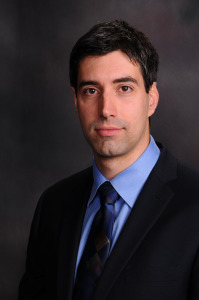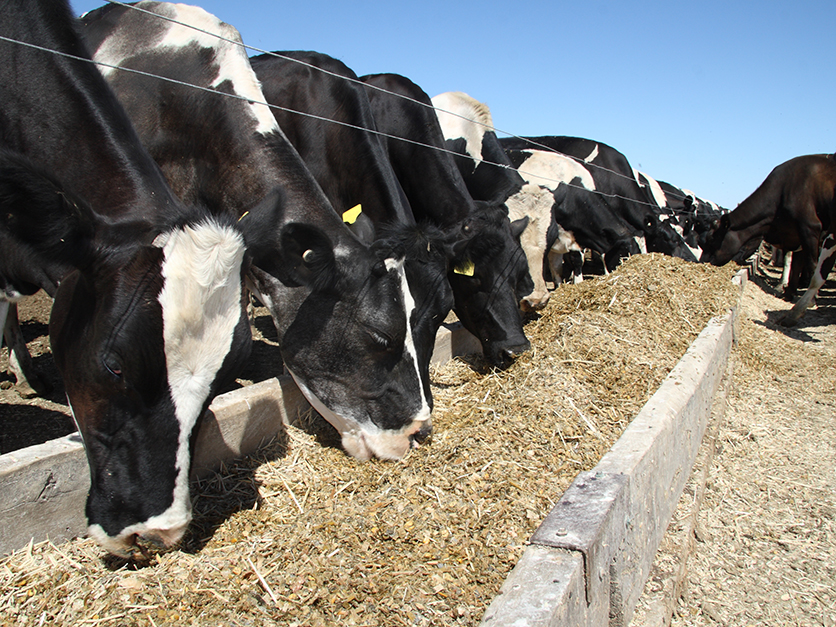Like most dairy producers in late 2019, Ryan Klussendorf of Medford, Wis., was optimistic about 2020 dairy prices and did not sign up for USDA’s Dairy Margin Coverage program. But after seeing extreme volatility this year, he’s not taking any chances for 2021 and said other producers shouldn’t either.
Klussendorf is 32 years old and milks roughly 120 cows with his wife. He said one reason he did not sign up for 2020 DMC coverage was to save money.
“Going into the year, with all these trade deals coming together and the market starting to look up for the future, I chose not to do that being it was an extra expense,” he told Agri-Pulse.
But Klussendorf wasn’t taking the risk this year. He said he purchased coverage for 2021 as soon as producers could apply, taking into account current dairy market futures as well as expected increasing feed costs.
“There is still going to be that uncertainty with coronavirus going forward and I knew this was the best way to mitigate that risk,” Klussendorf stated.
The program was developed in the 2018 farm bill and replaced the Margin Protection Program. DMC “offers protection for producers when the difference between the all milk price and the average feed price (the margin) falls below a certain dollar amount selected by the producer,” according to USDA.
Sign-up for DMC — as well as the second round of the Coronavirus Food Assistance Program (CFAP) — ends this Friday, but some in the industry are pushing to give producers more time to enroll. On Monday, the National Milk Producers Federation sent a letter to USDA asking officials to extend the application deadline to Jan. 30.
The letter argued an extension would allow dairy farmers to make better-informed choices while giving both milk producers and USDA staff strained by coronavirus-related challenges, additional time to communicate.

Chris Galen, NMPF
Chris Galen, senior vice president of member services at NMPF, said this year proved those producers who utilized DMC at the maximum coverage level did receive compensation “well above” the premiums they paid into it.
“I don’t want to necessarily predict that will be the case for a third year in 2021, but that certainly is what the indication is right now,” Galen told Agri-Pulse.
He said the number-one driver of producer milk checks is cheese sales — or Class III milk futures — and demand for cheese, which has been severely hampered by the coronavirus pandemic.
“A lot of that is in the food service channel,” Galen said. “Until we see a robust return of the food service business in people dining out or just getting takeout, that’s really going to be a headwind.”
Galen noted it's uncertain if USDA’s Farmers to Families Food box program will continue next year. That program — which distributes surplus commodities to needy families — has helped boost cheese prices and other dairy prices.
Interested in more coverage and insights? Receive a free month of Agri-Pulse West.
However, while the food box program and CFAP may have softened the blow from adverse market effects from COVID-19, University of Minnesota Assistant Professor Marin Bozic said they are contributing to a rise in milk production.
In September, milk production year-over-year grew 2.4% and in October it rose 2.5%, according to the National Agricultural Statistics Service.
“Those are extremely large growth rates. Whenever we see milk production go over 2%, the chances are we will end of up with oversupply,” Bozic told Agri-Pulse. “My biggest concern for the first part of next year (is) oversupply that may be induced by aggressive policy interventions in 2020.”
Bozic said some dairy producers may be banking on ad hoc programs to continue next year, but called that an extremely dangerous assumption.
“It would be reckless to bet the farm on continuing the programs that are more likely than not to go away,” he told reporters Friday during a USDA virtual press conference.

Marin Bozic, University of Minnesota
Sign-up levels for next year are below overall enrollment numbers for 2020.
As of Dec. 7, roughly 45%, or 11,166 out 24,897 producers with established production history, had signed up for coverage in 2021. There are 37,468 licensed dairy operations in the U.S., according to NASS.
Last year, DMC enrollment for 2020 coverage as of Dec. 7 amounted to 13,499 producers, or 51% out of 26,274 operations with established production history.
Bill Northey, USDA's undersecretary for Farm Production and Conservation, expects more sign-ups for 2021 than 2020 after the way the program worked this past year.
“Certainly, there is an insurance premium that producers need to pay, but that was quickly covered as soon as we saw a drop in market prices back in April, May and June,” Northey told Agri-Pulse.
Northey said he talked to producers who valued paying the premium because they knew they were covered during the uncertainty of the coronavirus pandemic.
For more news, go to www.Agri-Pulse.com.


